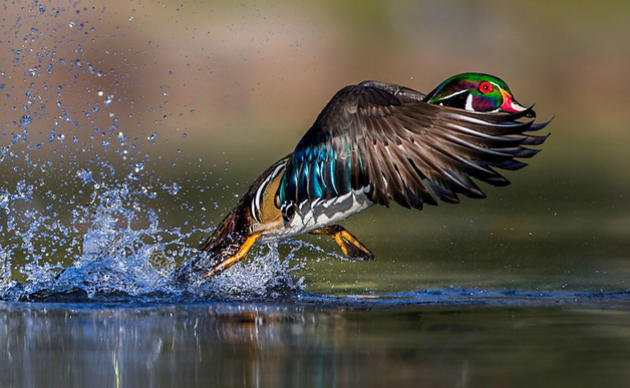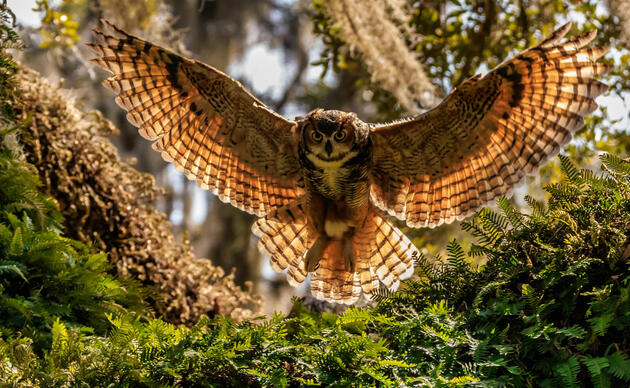One grey day last fall, I found myself wandering on a path beside the South Carolina Governor’s Mansion, stepping over magnolia roots and brushing past the deep green leaves of old camellias. Unconcerned by my presence, vacant-eyed marble statues gazed at me through the branches of a tea olive.
Then I heard the drone of a passing plane. If it weren’t for that, I could just as well have been walking this same path a century ago wearing a hoop skirt and a shawl. So little here has changed! Back then, a visitor might have delighted, as I did, in the same chorus of wrens, doves, chickadees, and scolding jays that have been here for thousands of generations.
Layers of History
The Governor’s Mansion, too, has survived a lot of changes. In 1842, a military academy was built here, then torn apart by the Civil War. Soon after, the academy’s one remaining building was renovated as housing for South Carolina’s leaders. For 176 years, this monument to South Carolina history has witnessed our nation’s gradual passage into modern life.
But even before this human history began, the site of the Governor’s Mansion was already grand — perched high on a hilltop overlooking the Broad and Saluda Rivers. And the hilltop was once covered with a closed-canopy forest whose towering hardwoods echoed with the calls of Wood Thrush, Red-cockaded Woodpeckers, and other now-vanishing species.
For South Carolina’s history is written not only in human timelines, but in what we know of the flora and fauna that have thrived here since before Europeans arrived. Shadows of this past are still hidden in the Governor’s formal gardens. Here an ancient oak, there a palmetto — and occasionally the boisterous “tea-kettle tea-kettle” of our state bird, the Carolina Wren.
Mixed in with the characteristically Southern trees are boxwoods, azaleas, and many other ornamental plants from around the world. These exotic plants are beautiful, and they give the grounds a distinctly old-fashioned feel. But they’re not ideally suited for our state’s birds.
Native Glory
So what’s new on the horizon for the Governor’s Mansion — and, really, our whole state — is the dawning recognition of the beauty of native plants and the tremendous benefits they provide.
South Carolina’s native birds are declining because the natural landscapes that once covered the state are disappearing. Native birds need the insects that coevolved with our native plants. Adult birds drop those insects into the pink, gaping beaks of their chicks, who are insatiable feeders. This protein-rich diet helps chicks mature from naked and helpless to fully-flighted in two to three short weeks.
So how do we help these natural processes continue forever in South Carolina? We add native plants to our yards, turning a biological wasteland of exotics and turf grass into a food-rich habitat for birds. The ultimate goal is to stitch back together our state’s fragmented wild habitats, which can slow the decline of many bird species.
Planting natives also benefits humans directly. Well-chosen natives can virtually eliminate the need for watering, fertilizer, pesticides, and lawn care — saving time and money, and keeping toxins at bay.
Please Join Us!
So please consider joining us Tuesday, April 10th as Audubon members and friends install a bird-friendly native plant garden at the Governor’s Mansion.
Not only will the new installation provide just the right mix of insects, seeds, and berries for local birds; it will also educate thousands of visitors each year. Many will be surprised to learn that native plants can look fantastic and fit well into a formal garden.
It'll take a few years for our plantings to mature. I look forward to the day when our state bird, that flitty little Carolina Wren, can thrive in a Governor’s Mansion garden that mimics the landscape of days gone by — long before humans took this hilltop for the people of South Carolina.











